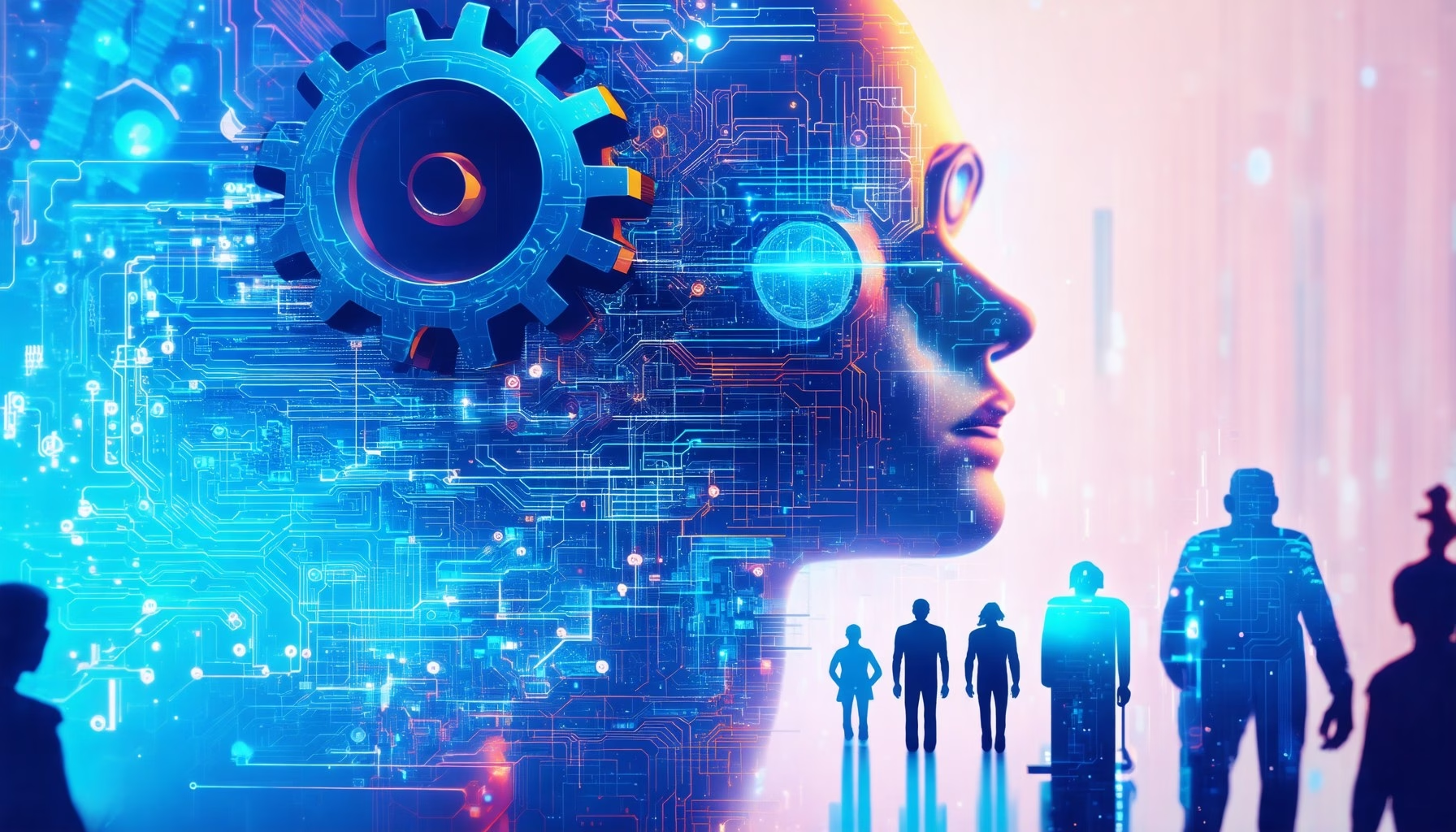Key Takeaways
- 24/7 Availability: Automated customer service systems provide round-the-clock support, ensuring customers receive assistance anytime, boosting satisfaction and loyalty.
- Cost Efficiency: By minimizing the need for large support teams, businesses can significantly cut operational costs while maintaining high service quality.
- Enhanced Customer Experience: Quick responses and personalized interactions lead to improved customer satisfaction, making automation a key component of modern customer service.
- Scalability: Automated solutions can easily adapt to fluctuating inquiry volumes, ensuring timely responses during peak times.
- Data-Driven Insights: Automation tools collect valuable customer interaction data, helping businesses refine strategies and improve service delivery.
- Integration with Messaging Platforms: Many automated systems can seamlessly connect with popular messaging apps, enhancing user engagement and support efficiency.
In an era where customer expectations are at an all-time high, automated customer service examples have emerged as a game-changer for businesses striving to enhance efficiency and satisfaction. This article delves into the fascinating world of automated customer service, exploring its significance in today’s fast-paced business landscape. We’ll uncover the basics of automated services, highlight top 5 automated customer service examples across various industries, and even take a lighthearted look at automated customer service examples in movies. Furthermore, we will examine how AI innovations are reshaping customer interactions and provide insights into automated call centers and their efficiency. Whether you’re looking to enhance your resume with automated customer service skills or seeking real-world scenarios to illustrate your understanding, this comprehensive guide will equip you with the knowledge and examples you need to navigate the evolving landscape of customer service automation.
Understanding the Basics of Automated Customer Service
Automated customer service refers to the use of technology, particularly automation and artificial intelligence (AI), to manage customer interactions and support without the need for human agents. This system enables businesses to address customer inquiries, resolve issues, and provide information efficiently and effectively. Key features of automated customer service include:
- 24/7 Availability: Automated systems can operate around the clock, ensuring that customers receive assistance at any time, which enhances customer satisfaction and loyalty.
- Cost Efficiency: By reducing the need for a large customer service team, businesses can significantly lower operational costs while maintaining high service levels.
- Scalability: Automated customer service solutions can easily scale to handle increased volumes of inquiries, especially during peak times, without compromising response times.
- Personalization: Advanced AI algorithms can analyze customer data to provide personalized responses and recommendations, improving the overall customer experience.
- Integration with Messaging Platforms: Many automated customer service systems can integrate with popular messaging platforms, such as chatbots on websites or social media, allowing for seamless communication.
Recent studies indicate that businesses utilizing automated customer service solutions report higher efficiency and customer satisfaction rates. According to a report by McKinsey, companies that implement AI-driven customer service can improve response times by up to 80% (McKinsey & Company, 2021).
In conclusion, automated customer service is a transformative approach that leverages technology to enhance customer support, reduce costs, and improve service delivery. As businesses continue to adopt these solutions, the landscape of customer service will evolve, making it essential for companies to stay updated on the latest trends and technologies in this field.
The Importance of Automated Customer Service in Today’s Business Landscape
In today’s fast-paced business environment, the importance of automated customer service cannot be overstated. As companies strive to meet the ever-increasing expectations of consumers, automated solutions provide a competitive edge. Here are several reasons why automated customer service is crucial:
- Enhanced Customer Experience: Automated systems ensure quick responses to inquiries, which is vital for customer satisfaction. By utilizing effective customer engagement examples, businesses can create a seamless experience that keeps customers coming back.
- Data-Driven Insights: Automated customer service tools collect valuable data on customer interactions, allowing businesses to analyze trends and improve their services. This data can be used to refine marketing strategies and enhance product offerings.
- Cost-Effective Solutions: Implementing automated customer service reduces the need for extensive human resources, leading to significant cost savings. This efficiency allows businesses to allocate resources to other critical areas.
- Adaptability to Market Changes: Automated systems can quickly adapt to changes in customer behavior or market demands, ensuring that businesses remain relevant and responsive.
As we move forward, the integration of automated customer service will continue to shape the future of business interactions, making it essential for companies to embrace these technologies to thrive in a competitive landscape.

What is Automated Customer Service?
Automated customer service refers to the use of technology, particularly artificial intelligence (AI), to manage customer interactions without human intervention. This approach streamlines communication, allowing businesses to provide quick and efficient responses to customer inquiries. By leveraging automated services examples, companies can enhance their customer experience while reducing operational costs. Understanding the basics of automated customer service is crucial for businesses aiming to improve their engagement strategies.
Understanding the Basics of Automated Customer Service
At its core, automated customer service utilizes AI-driven tools to facilitate interactions between businesses and customers. These tools can include chatbots, automated email responses, and self-service portals. For instance, IBM’s insights on chatbots highlight how these technologies can handle routine inquiries, allowing human agents to focus on more complex issues. This not only improves efficiency but also enhances customer satisfaction by providing immediate assistance.
The Importance of Automated Customer Service in Today’s Business Landscape
In today’s fast-paced business environment, the importance of automated customer service cannot be overstated. Customers expect quick responses and personalized experiences. Here are some key reasons why automated customer service is vital:
- Personalization: Tailoring interactions by using the customer’s name and remembering past purchases or preferences creates a more engaging experience. According to a study by Epsilon, 80% of consumers are more likely to make a purchase when brands offer personalized experiences.
- Transparency and Education: Clearly communicating policies, pricing, and product details builds trust. A report by HubSpot indicates that 93% of customers are more likely to be repeat buyers if they receive excellent customer service.
- Prompt Response to Feedback: Addressing customer inquiries and complaints swiftly shows that their opinions matter. Research from Microsoft reveals that 61% of consumers have stopped doing business with a brand after a poor customer service experience.
- Flexible Return Policies: Implementing customer-friendly return policies can enhance satisfaction. According to a study by Invesp, 92% of consumers will buy again if returns are easy.
- Building Community Connections: Engaging with local customers through community events strengthens brand loyalty. A survey by Eventbrite found that 78% of consumers are more likely to support brands involved in their communities.
Incorporating tools like Messenger Bots can also enhance customer service by providing instant responses to common inquiries, thus improving overall efficiency and customer satisfaction. For more insights on effective customer engagement, check out effective customer engagement examples.
Top 5 Automated Customer Service Examples Across Industries
Automated customer service has transformed the way businesses interact with their customers, providing efficient solutions that enhance user experience. Here are five notable examples of automated customer service across various industries:
1. **E-commerce Chatbots**: Many online retailers utilize chatbots to assist customers with inquiries about product availability, order tracking, and returns. For instance, platforms like Shopify integrate chatbots that can handle multiple queries simultaneously, ensuring customers receive timely responses.
2. **Healthcare Virtual Assistants**: In the healthcare sector, automated services examples include virtual assistants that help patients schedule appointments, access medical records, and receive medication reminders. These tools not only streamline operations but also improve patient engagement and satisfaction.
3. **Telecommunications Automated Systems**: Companies in the telecommunications industry often employ automated customer service systems to manage billing inquiries and technical support. These systems can guide customers through troubleshooting steps, reducing wait times and enhancing service efficiency.
4. **Banking AI Solutions**: Financial institutions are increasingly adopting AI-driven chatbots to assist customers with account inquiries, transaction history, and loan applications. This automation allows banks to provide 24/7 support while freeing up human agents for more complex issues.
5. **Travel Booking Bots**: Travel agencies leverage automated customer service examples to help users book flights, hotels, and rental cars. Bots can provide personalized travel recommendations based on user preferences, making the booking process seamless and efficient.
Automated Customer Service Examples in Movies: A Fun Perspective
Automated customer service has also made its way into popular culture, often depicted in movies that explore futuristic themes. Here are a few entertaining examples:
1. **”Love, Death & Robots”**: This animated anthology series features episodes that highlight the integration of AI and automated services in everyday life. The portrayal of AI-driven customer interactions raises questions about the future of human engagement and the role of technology in our lives.
2. **”Her”**: In this film, the protagonist develops a relationship with an advanced AI operating system that provides personalized assistance and companionship. This representation of automated customer service showcases the potential for AI to understand and respond to human emotions, enhancing user experience.
3. **”I, Robot”**: This sci-fi classic presents a world where robots serve humans, including automated customer service roles. The film explores the ethical implications of relying on AI for everyday tasks, prompting viewers to consider the balance between convenience and human connection.
These cinematic examples not only entertain but also provoke thought about the future of automated customer service and its impact on society. As technology continues to evolve, the line between human and automated interactions may blur, leading to exciting possibilities in customer engagement.
Exploring Different Types of Automation in Customer Service
Automation in customer service refers to the use of technology to perform tasks with minimal human intervention, enhancing efficiency and customer satisfaction. Here are several automated customer service examples that illustrate how businesses leverage automation:
- Chatbots and Messenger Bots: These AI-driven tools automate customer interactions on platforms like Facebook Messenger, providing instant responses to inquiries and enhancing user engagement. For instance, Messenger Bot can manage customer queries without the need for continuous human oversight.
- Automated Email Responses: Businesses often use automated customer service auto reply email examples to acknowledge customer inquiries instantly. This ensures that customers feel valued and informed while waiting for a more detailed response.
- Self-Service Portals: Many companies implement self-service options where customers can find answers to common questions through FAQs or knowledge bases, reducing the need for direct human interaction.
- Interactive Voice Response (IVR): This technology allows customers to navigate through a phone system using voice commands or keypad inputs, directing them to the appropriate department without needing a live agent.
- Social Media Automation: Automated responses on social media platforms help manage customer inquiries efficiently, ensuring timely engagement and support.
Automated Services Meaning: What It Really Entails
Understanding automated services examples is crucial for businesses looking to enhance their customer service operations. Automated services encompass a range of technologies designed to streamline processes and improve customer interactions. Here are some key aspects:
- Efficiency and Speed: Automation significantly reduces response times, allowing businesses to address customer needs promptly. This is particularly evident in automated customer service examples in healthcare, where timely responses can be critical.
- Cost Reduction: By minimizing the need for human intervention in routine tasks, companies can lower operational costs while maintaining high service levels.
- Scalability: Automated systems can easily scale to handle increased customer interactions, making them ideal for businesses experiencing growth.
- Data Collection and Analysis: Automated services enable businesses to gather valuable insights from customer interactions, helping to refine strategies and improve service delivery.

Automated Customer Service Examples for Evaluation: Measuring Success
When evaluating automated customer service examples, it’s essential to consider how these systems enhance user experience and operational efficiency. Automated customer service examples can be found across various industries, showcasing their versatility and effectiveness. For instance, in healthcare, automated appointment reminders and follow-up messages streamline patient communication, ensuring that individuals receive timely information without overwhelming staff. This not only improves patient satisfaction but also reduces no-show rates, demonstrating the tangible benefits of automation.
Another compelling example is the use of automated customer service auto reply email examples. These systems can instantly acknowledge customer inquiries, providing immediate reassurance that their concerns are being addressed. By utilizing templates that include FAQs or links to relevant resources, businesses can significantly reduce response times and improve customer engagement. This proactive approach is particularly valuable in high-volume environments, where timely communication is crucial.
Automated Customer Service Examples Scenarios
Real-world scenarios of automated customer service in action illustrate the practical applications of these technologies. For example, consider a retail company that implements an AI-driven chatbot on its website. This chatbot can handle common inquiries about product availability, shipping times, and return policies. By automating these interactions, the company frees up human agents to focus on more complex issues, ultimately enhancing overall service quality.
In the realm of entertainment, automated customer service examples in movies, such as the AI systems depicted in “Love, Death & Robots,” provide a fun perspective on the potential of automation. While fictional, these portrayals highlight the growing integration of AI in everyday life and customer interactions. They serve as a reminder of how automation can transform service delivery, making it more efficient and user-friendly.
As businesses continue to explore automated customer service examples for resumes, it’s important to highlight skills such as proficiency in using chatbots, familiarity with automated response systems, and the ability to analyze customer interaction data. These skills are increasingly sought after in the job market, reflecting the demand for professionals who can navigate the evolving landscape of customer service automation.
Understanding Automation Services and Their Benefits
Automation services refer to the systematic use of technology to perform tasks and processes with minimal human intervention. This encompasses a wide range of applications, including but not limited to:
1. **Definition and Scope**: Automation services integrate various tools and technologies across different domains to streamline workflows. This integration allows for the automation of repetitive tasks, processes, and business functions, enhancing efficiency and reducing the likelihood of human error.
2. **Types of Automation**:
– **Process Automation**: Focuses on automating business processes to improve efficiency and accuracy. This can include anything from data entry to complex workflows.
– **Task Automation**: Involves automating specific tasks, such as sending emails or generating reports, which can save time and resources.
– **Event Automation**: Automates responses to specific triggers or events, such as customer inquiries or system alerts.
3. **Benefits of Automation Services**:
– **Increased Efficiency**: By automating routine tasks, organizations can allocate resources to more strategic initiatives.
– **Cost Reduction**: Automation can significantly lower operational costs by minimizing the need for manual labor.
– **Improved Accuracy**: Reduces the risk of human error, leading to more reliable outcomes.
4. **Technologies Involved**: Automation services often utilize technologies such as Robotic Process Automation (RPA), Artificial Intelligence (AI), and Machine Learning (ML) to enhance capabilities. For instance, AI-driven chatbots can automate customer service inquiries, providing immediate responses and improving user experience.
5. **Real-World Applications**: Many businesses leverage automation services to optimize their operations. For example, marketing automation platforms help manage campaigns and customer interactions efficiently.
6. **Future Trends**: The automation landscape is evolving, with trends such as hyperautomation and the integration of AI becoming increasingly prominent. Hyperautomation refers to the use of advanced technologies to automate processes at scale, leading to greater agility and responsiveness in business operations.
For further reading on the impact and implementation of automation services, consider exploring resources from reputable sources such as McKinsey & Company and the Institute for Robotic Process Automation & Artificial Intelligence (IRPAAI).
Automated Customer Service Examples for Evaluation: Measuring Success
When evaluating automated customer service examples, it’s essential to consider various metrics that indicate success. Here are some key examples across different industries:
1. **Healthcare**: Automated customer service in healthcare can streamline appointment scheduling and patient inquiries. For instance, chatbots can assist patients in booking appointments or answering common health-related questions, significantly reducing wait times and improving patient satisfaction.
2. **E-Commerce**: Many online retailers utilize automated customer service to handle inquiries about order status, returns, and product information. For example, a chatbot on an e-commerce site can provide instant responses to customer queries, enhancing the shopping experience and increasing conversion rates.
3. **Telecommunications**: Companies in this sector often deploy automated systems to manage billing inquiries and technical support. Automated responses can guide customers through troubleshooting steps or provide information on service plans, improving overall efficiency.
4. **Travel and Hospitality**: Automated customer service examples in this industry include chatbots that assist with booking flights, hotel reservations, and providing travel updates. This not only enhances customer experience but also frees up human agents for more complex inquiries.
5. **Finance**: Financial institutions leverage automated services to handle customer inquiries related to account balances, transaction history, and loan applications. This automation can lead to faster response times and increased customer satisfaction.
By analyzing these automated customer service examples, businesses can identify best practices and areas for improvement, ultimately enhancing their customer service strategy. For more insights on effective customer engagement, check out our guide on effective customer engagement examples.
Automated Customer Service Examples Scenarios
Automated customer service scenarios illustrate how businesses can leverage technology to enhance customer interactions and streamline operations. These examples showcase the versatility and effectiveness of automated systems in various contexts.
1. E-Commerce Customer Support
In the e-commerce sector, automated customer service examples include chatbots that assist customers with order tracking, product inquiries, and returns. For instance, a customer might interact with a chatbot on a retail website to check the status of their order. The bot can provide real-time updates, reducing the need for human intervention and improving customer satisfaction. This scenario not only saves time for customers but also allows businesses to handle a higher volume of inquiries efficiently.
2. Healthcare Appointment Scheduling
In healthcare, automated customer service examples are evident in appointment scheduling systems. Patients can use automated services to book, reschedule, or cancel appointments without needing to speak to a receptionist. For example, a patient might receive an automated call or text reminder about their upcoming appointment, along with options to confirm or change it. This automation enhances patient experience by providing convenience and reducing administrative burdens on healthcare staff.
Customer Service Automation Software: Tools and Technologies
Various tools and technologies are available to implement automated customer service effectively. These include AI-driven chatbots, automated email responses, and customer relationship management (CRM) systems that integrate automation features. For example, Messenger Bot offers a sophisticated platform that allows businesses to automate responses across multiple channels, enhancing engagement and efficiency. By utilizing such technologies, organizations can improve their customer service operations and provide timely support.




